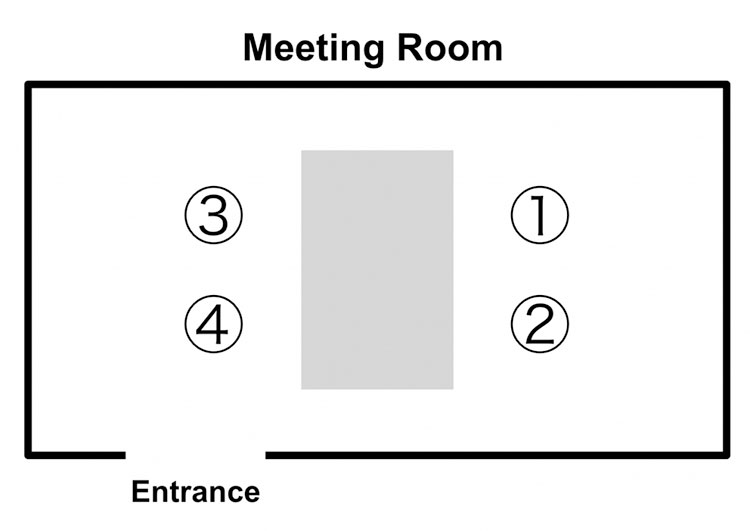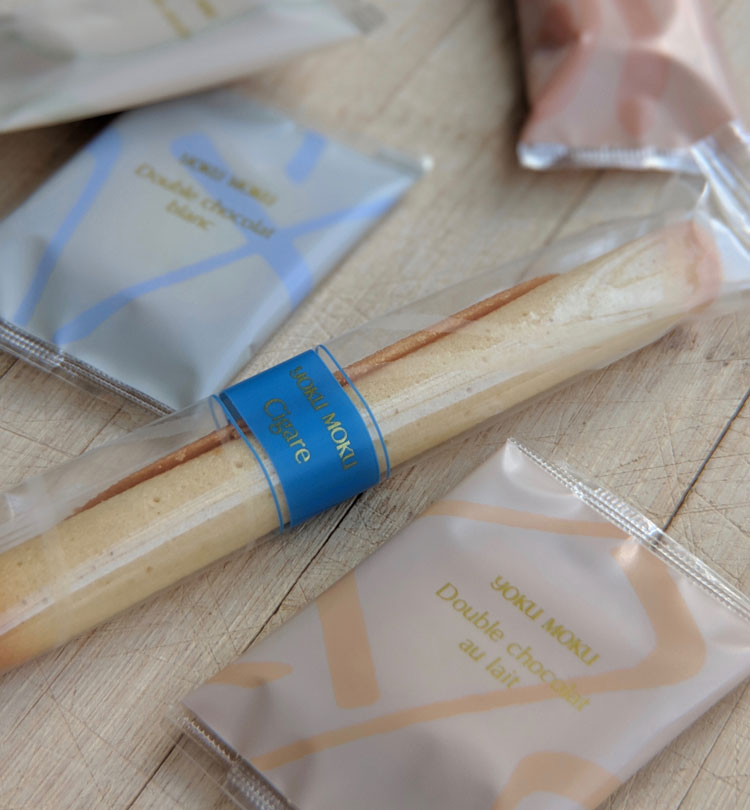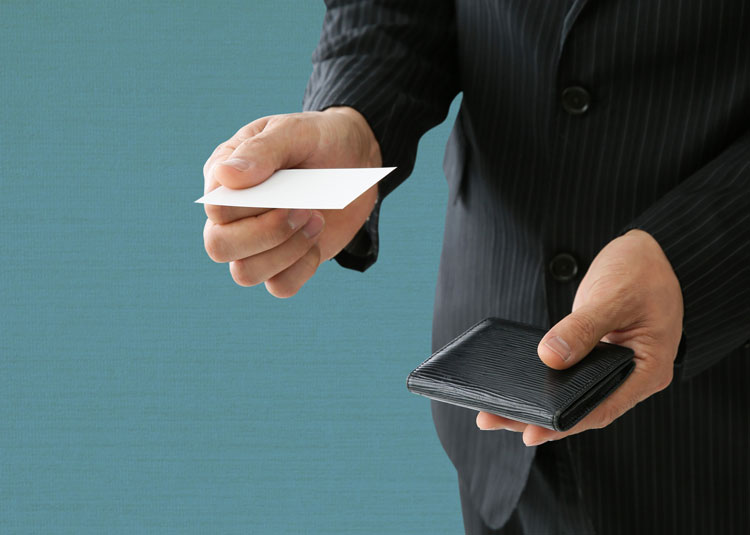
Btrax Design Company > Freshtrax > Learning Japane...
Learning Japanese Business Etiquette to Build Trust with Japanese Clients and Coworkers
Japanese business etiquette can be quite complex and intimidating as there are many rules, customs, and traditions to follow. However, their proactive attitude toward showing respect is what helps them build better and stronger relationships. For those truly interested in forming sincere bonds with Japanese business partners and colleagues, it is well-worth learning.
As an American, I’ve learned a lot about Japanese business etiquette since working at btrax. I’ve read articles on the subject, but found that many don’t explain the basic mindset behind Japanese business communication. The following are insights I have gathered on how to communicate with Japanese customers and partners from interactions with coworkers and clients.
Pillars of Japanese Business Etiquette
One important thing to keep in mind is that at the foundation of proper Japanese business etiquette sits the idea that respect is paramount. Although the concept of respecting others isn’t very different from good business etiquette in general, Japanese business etiquette tends to be much more formal. With that being said, I’d like to cover two important pillars that are part of Japanese business etiquette:
1. Maintaining harmony
Harmony within the office is important because it sets the tone of the office and working relationships. The basis of maintaining harmony in the office is to respect your superiors, guests, and colleagues simply as human beings. The Japanese take it up another level and are extremely careful not to offend one another as it can create a toxic working environment. As employees strive to maintain harmony, they also build trust in one another, creating a stronger community.
2. Showing respect to guests and superiors
Understanding the importance of having respect for someone or the culture is what truly matters to the Japanese. There are many things the Japanese intentionally do to express respect to their guests and superiors as there is a strong culture around hierarchy. The rituals and systems aren’t meant to be strict or demeaning in any way, they are simply just ways to show respect.
Now, let’s look at how these play into Japanese business etiquette.
Maintaining Harmony
Although it is not taught, it is important to know how to read the mood of the room to be able to react appropriately to the situation at hand. Also, it’s best not to be too direct with your opinions as it may come off as too aggressive, too offensive, or cause someone else to lose face. In general, the Japanese speak in an indirect manner, often hesitant of sharing their true opinions to avoid confrontations.
Another thing I learned is that many Japanese are very focused on not burdening coworkers with work that isn’t theirs. This shows in how Japanese coworkers feel bad if they take a day off or go on parental leave. It is a principle ingrained in their mannerisms.
How to conduct harmonious communication
Face-to-face communication is widely appreciated in Japanese business culture as a means of showing respect and being more personable. Even though technology allows for more convenient options, such as phone calls and video chats, in-person meetings are much more valued because it shows that you are taking the extra effort to show respect and build a relationship.

This also applies to meetings outside of business hours. Many times business partnerships are formed during “nomunication”, which will be explained later, or casual meetings. Throughout my time at btrax, I have noticed that many representatives from Japanese companies have come to meet with my CEO without a specific agenda. Likewise, my CEO has visited other companies when in Japan to solidify relationships.
Body language is especially important to be aware of in Japanese business culture. The body language should be open and welcoming, which means no crossed arms or legs with hands out and open. Also, use both hands to give and receive everything, whether it be a business card, document, or even a gift.
Bowing is not as important within internal communication and when meeting foreign guests or clients. The Japanese will understand if a foreigner does not know the difference between a business greeting bow or a bow of thanks. However, it’s still good to know, so here’s an article that goes into more detail about it.
What is “Nomunication”?
“Nomunication” is a way to strengthen business relationships at drinking events such as happy hours or inviting a coworker out for a drink. It is the combination of the Japanese word “nomu,” which means to drink and the word “communication.”

It is very common for a superior or subordinate to ask one another out for drinks as “nomunication” is completely socially acceptable. This is where coworkers can share their honest opinions about the company or someone’s performance. It is also a time to get to know one another better.
In keeping with the idea of always being considerate to others, drinks should be poured for guests and superiors. Also, when toasting, the subordinate’s glass should be raised lower than their superiors to show respect for the business hierarchy system.
Showing respect to superiors and guests
The Japanese are very specific about showing respect to others whether they be a guest visiting the office or a highly-respected superior. The hierarchy is based on age, job position, and the amount of time spent at the company.
Like many Asian cultures, the Japanese use honorific titles when speaking to older individuals as a sign of respect. This is why age is so important. It’s best to be discreet when finding out a person’s age, especially when talking to women.
The basics of Japanese seating etiquette
Seating arrangements are a unique way for the Japanese to show respect to superiors and guests. The “kamiza” is the seat of honor. It is known as the most comfortable and safest seat, usually reserved for a superior or a guest. The “shimoza” is the lowest seat which is typically for the host or the lowest subordinate.
These arrangements can get quite complex, but as a base, I will explain the most simple arrangement. The kamiza is preferably seated in the furthest position from the door because it is the safest. Those that follow are based on the hierarchy order from the next highest position to the lowest. Seating arrangements are important at meetings, restaurants, in vehicles, and on elevators.
I have noticed that this system is not as stressed nowadays. At btrax meetings, anyone will sit in any open seat. However, it is important to understand it as another way the Japanese show respect to each other and for the hierarchy system.
Below is a diagram of how the seating arrangement would be in a meeting of 4 people. Person 1 is seated at the kamiza which is farthest from the entrance. Person 4 is seated at the shimoza as it is closest to the entrance.

Source: “Useful Japanese Business Manners to Impress a Client or Guest”
What to do when visiting an office for the first time
Being 5 minutes early is ideal. While being late in the U.S. is looked down upon, in Japan it is unacceptable because it is disrespectful to make the host wait. On the other hand, being more than 5 minutes early is considered to be rude because it is inconsiderate to make the host feel rushed, unprepared, and uneasy knowing they are making you wait. In other words, show up just a little before your scheduled meeting time.
Also, don’t forget to bring “omiyage”, or a small gift, with you to show respect. Small candies are good gifts for overseas coworkers while boxed candies, stickers or notepads would make excellent gifts for clients or business partners. Japanese companies will not officially accept any costly gifts because it can be seen as a bribe. If your company has swag, that is a nice gift to bring when meeting clients or partners.

We received a box of Yoku Moku goodies from clients visiting the office.
Upon entering the office, always take off your coat and be sure to stand when greeting your hosts and their colleagues. If you are not the superior, you will introduce yourself first when exchanging business cards. After everyone has been introduced, wait for your host to let you know when it’s appropriate to take a seat. If you get lost, it is best to just follow their lead.
How to: Business card etiquette in Japan

Business cards are very important because they help you remember the names of the people you meet. It is also one of the most important interactions you will have as Japanese place importance on this ritual.
Business card exchange steps:
- Pull out a business card from the business card holder
- Hold out the business card with both hands (superiors will place their card higher than the subordinate)
- Introductions
- Pass the card with the right hand
- Accept their card with the left hand, then hold it with both hands
- Put the business cards in the seating order if there are multiple cards
Things you shouldn’t do:
- Pull a business card out of a pocket
- Write notes or doodle on the business card in front of the guest
- Fold it
- Exchange it over a table
- Put the business card in a pocket right after it is received
Although this process seems very complex and strict, the focus should be on making sure you don’t break any of the rules. Japanese understand that Americans don’t have their same rules and will appreciate you for giving your business card, even if you don’t follow the steps in perfect order.
Final points
Many traditional companies that were previously owned by the government or are currently providing services to the government still tend to be stiff on Japanese business etiquette standards. However, many of the rules, such as reading the room, aren’t necessarily strict. Generally, the Japanese are starting to lighten up on these standards, especially more modern companies, such as startups, small companies, global companies, etc.
Little things, such as expressing gratitude or accepting a business card with both hands, make a big difference. They illustrate an effort in learning about Japanese business etiquette practices like showing respect for superiors, colleagues, guests and helping to maintain harmony in the workplace.
Japanese people are typically very polite so they won’t get upset over mistakes as long as they are humble and sincere mistakes. At the end of the day, mutual respect is key and will go a long way in building a relationship, whether in business or outside of work.
#####
We at btrax understand the difficulties that come with international business which is why we’re here to act as a bridge between you and Japan. Contact us if you’re interested in expanding your business to Japan. If you’re interested in all things Japanese business, sign up for our newsletter and follow us on Twitter and LinkedIn. We hope to connect with you soon!







